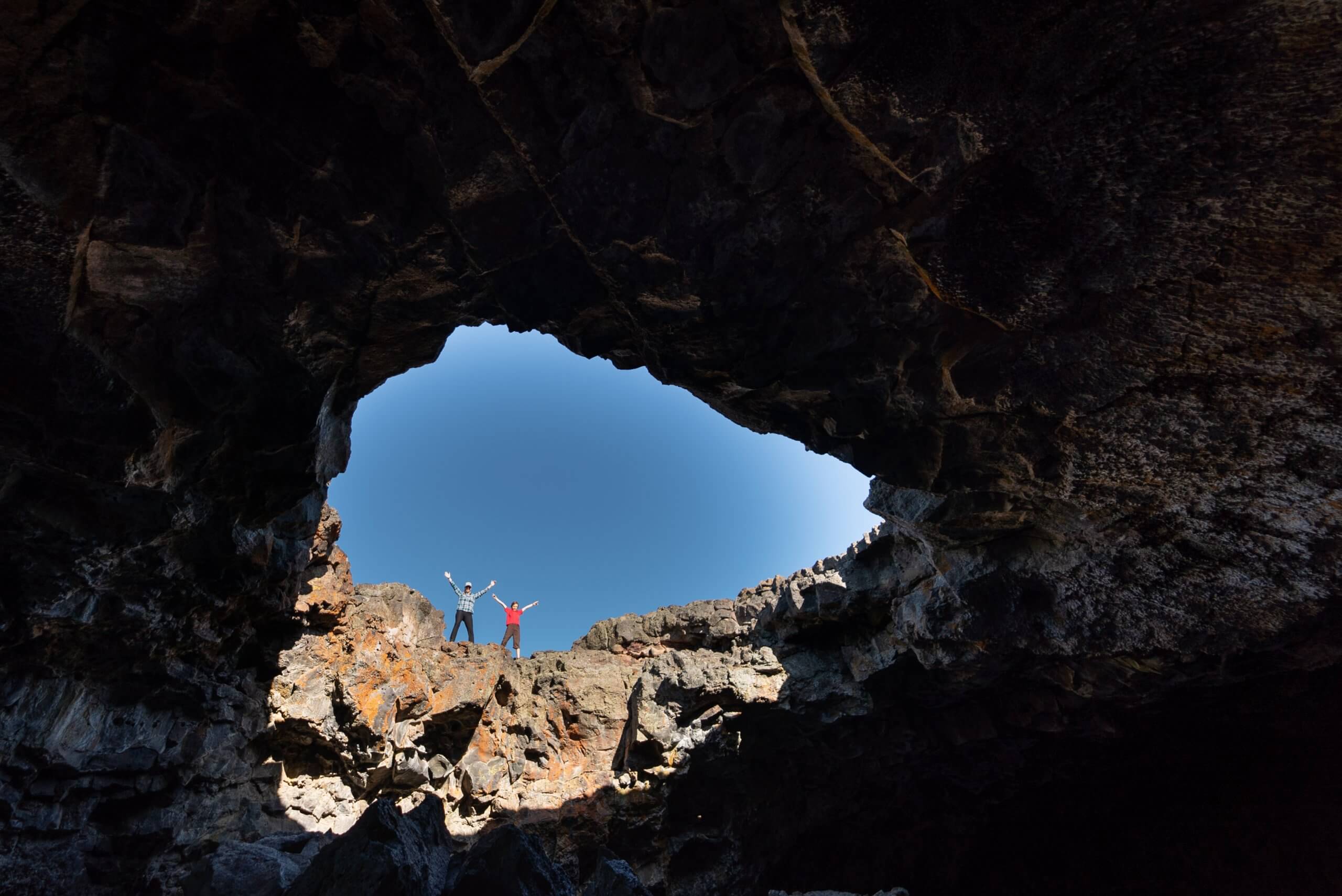Melynda Harrison worked in partnership with Visit Idaho to create this Travel Tip.
Miles before arriving at the visitor center at Craters of the Moon National Monument & Preserve, a field of hardened lava appeared south of the highway. At first, my husband and I debated whether it was actually lava or just a shadow of a cloud across the land. Having been to Craters several times before, I knew it was the beginning of a volcanic wonderland.
The landscape at Craters of the Moon was created by a handful of lava flows over time. The lava there didn’t erupt out of volcanoes but rather oozed out of fissures in the earth and occasionally spewed out of vents. Sometimes a flow would partially cover a previous lava bed. Other times it would create new ones. The result was 618 square miles of cinder cones, lava tubes, tree molds, lava rivers, spatter cones and lava beds as far as the eye can see.
I keep coming back to Craters of the Moon because it’s a place like no other—it’s “out of this world,” as they say. I couldn’t wait to share it with my husband, Henry, who had never been, and our two boys, who were too young to remember our last visit.
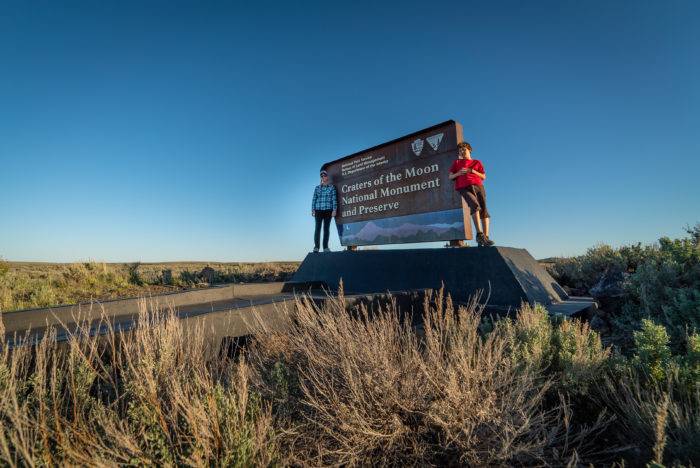
1. Volcanoes and Space Research at the Visitor Center
Our first stop was the visitor center. We wandered through the exhibits, got our bearings and picked up Lunar Ranger packets for the boys. While all the parks and monuments in the National Park System have Junior Ranger programs, Craters of the Moon is the only one with a Lunar Ranger Badge. That’s because the effects of volcanism aren’t just of interest to geologists, biologists and climatologists—this otherworldly landscape turned out to be perfect for NASA research and space mission training.
In 1969, the Apollo 14 astronauts prepared for their trip to the moon (also a volcanic landscape) with a visit to Craters. They learned how to select volcanic samples to bring back to Earth and how to navigate a lava environment. NASA research at Craters of the Moon has continued to this day.
The visitor center is also the place to get a cave permit, and we knew we wanted to explore a lava tube. To protect bats from disease, anyone who plans to enter the lava tubes or caves needs a free permit. The park staff will check your gear and go over a few safety details.
2. View From the Scenic Loop Road
A seven-mile loop road points you to all the trailheads in the park, and you can even cross-country ski there in winter. While we couldn’t wait to get out of the car, run around and immerse ourselves in the landscape and all the things to do at Craters of the Moon, the drive itself was worth the visit. Upon leaving the visitor center, we were instantly transported to a world filled with cinder beds, lava hoodoos and surreal landscapes.
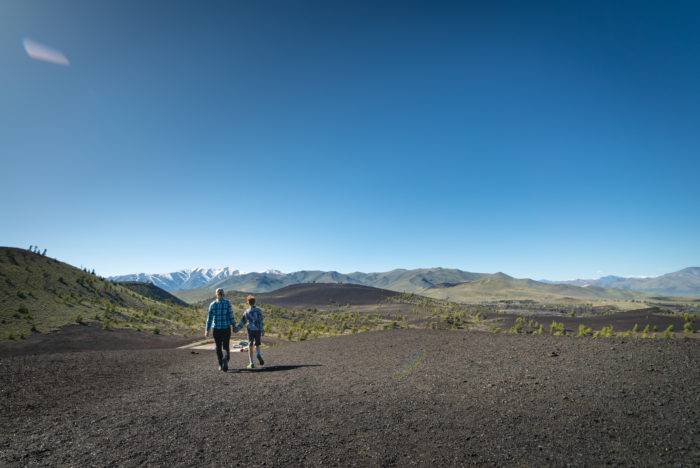
3. Hiking on the Moon
With maps in hand and a permit displayed on the dashboard, we chose a few hikes. I wanted the boys and Henry to see as many of the different types of volcanic features as possible.
One of the great things about Craters of the Moon is that you can see so much from just a few short trails—it’s perfect for families or those who don’t have a lot of time. If you stay longer or camp overnight, you’ll have even more opportunities to explore. If you’re interested in stargazing, you’re in luck! Craters of the Moon is an International Dark Sky Park, meaning there is a lack of light pollution. Seeing the stars light up the endless sky is truly an unforgettable experience.
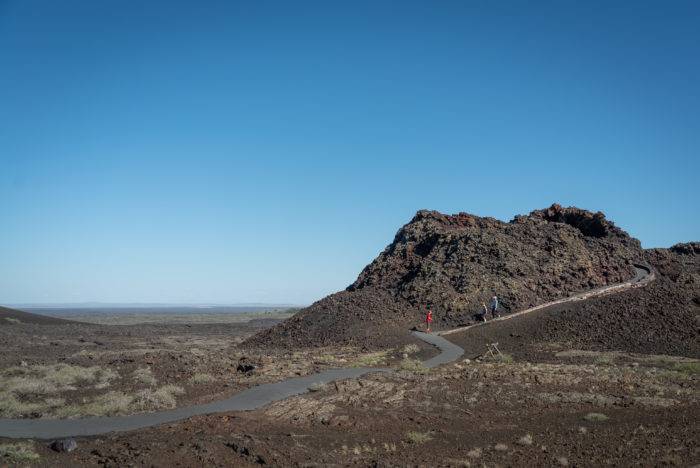
We only had three or four hours to spend on things to do at Craters of the Moon, so we started with a scramble up Inferno Cone. It’s a 0.2-mile steep walk up a cinder cone that looks like something straight out of Hawaii. It was hold-onto-your-hat windy up there, but we were enthralled with the panoramic views of the rest of the monument, the Great Rift, the Snake River Plain and the Pioneer Mountains.
Next was a quick jaunt up and around a spatter cone. Spatter cones start as vents in the ground, spewing lava into the air. The lava comes back down and lands around the vent, forming a cone-like drip sandcastle.
The 1.8-mile Broken Top Loop Trail was our next hike. The easy trail circled a hill, and along the way, we saw a lot of different volcanic features. The boys especially liked standing on the “lava bombs.” Masses of molten rock formed when a vent ejected viscous fragments of lava during an eruption. The lava cooled into a solid mass before it reached the ground.
4. Caving in Lava Tubes
There are five caves or lava tubes that can be explored with a free permit at Craters, and four of them can be found on the aptly named Caves Trail. We climbed down the stairs into Indian Tunnel and scrambled over rocks for about 800 feet before coming out the other end. The light shined into the tunnel from places where the lava tube had collapsed, and it was high enough that my 6’6” husband could stand upright most of the way. Other caves were darker and a tighter squeeze.
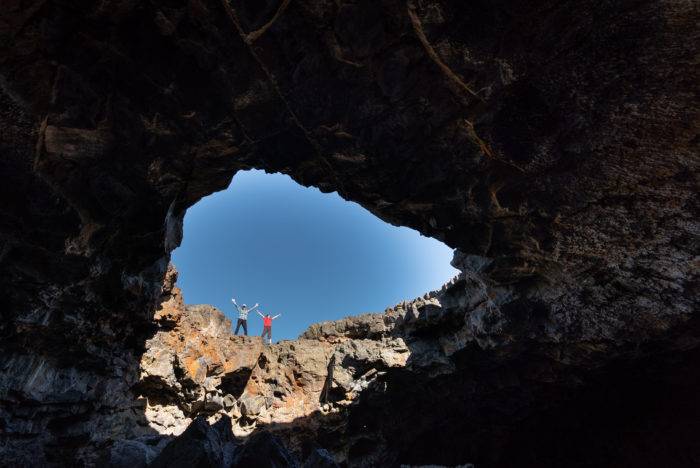
5. Fried Pickles
This bonus stop isn’t actually one of the things to do at Craters of the Moon, but you can’t pass through nearby Arco without going to Pickle’s Place for some fried pickles. I wasn’t sure how I’d feel about them, but they were really delicious, and the restaurant has a full menu if you want something more than pickles. As we ate our pickles and sipped iced tea, we chatted about what a cool, weird and interesting place Craters of the Moon National Monument & Preserve was and how we couldn’t wait to return.
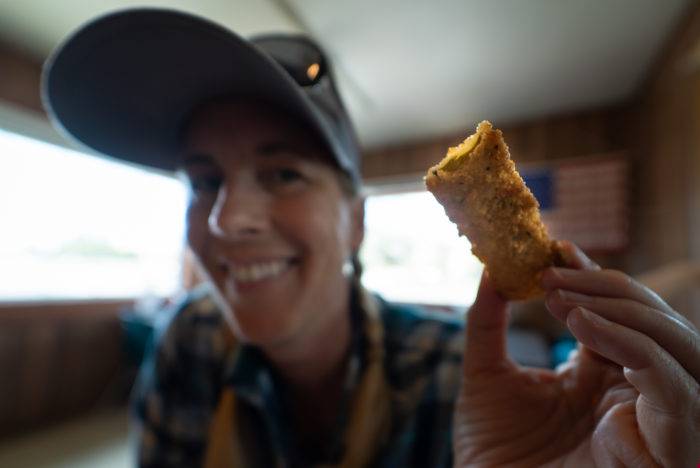
Feature image credited to Melynda Harrison.
Melynda Harrison writes about travel and outdoor family adventure at travelingmel.com, yellowstonetrips.com and for many local and regional publications. When she’s not behind a laptop, you can find her cross-country skiing, hiking or floating a river.
Updated on December 21, 2023
Published on May 15, 2018

